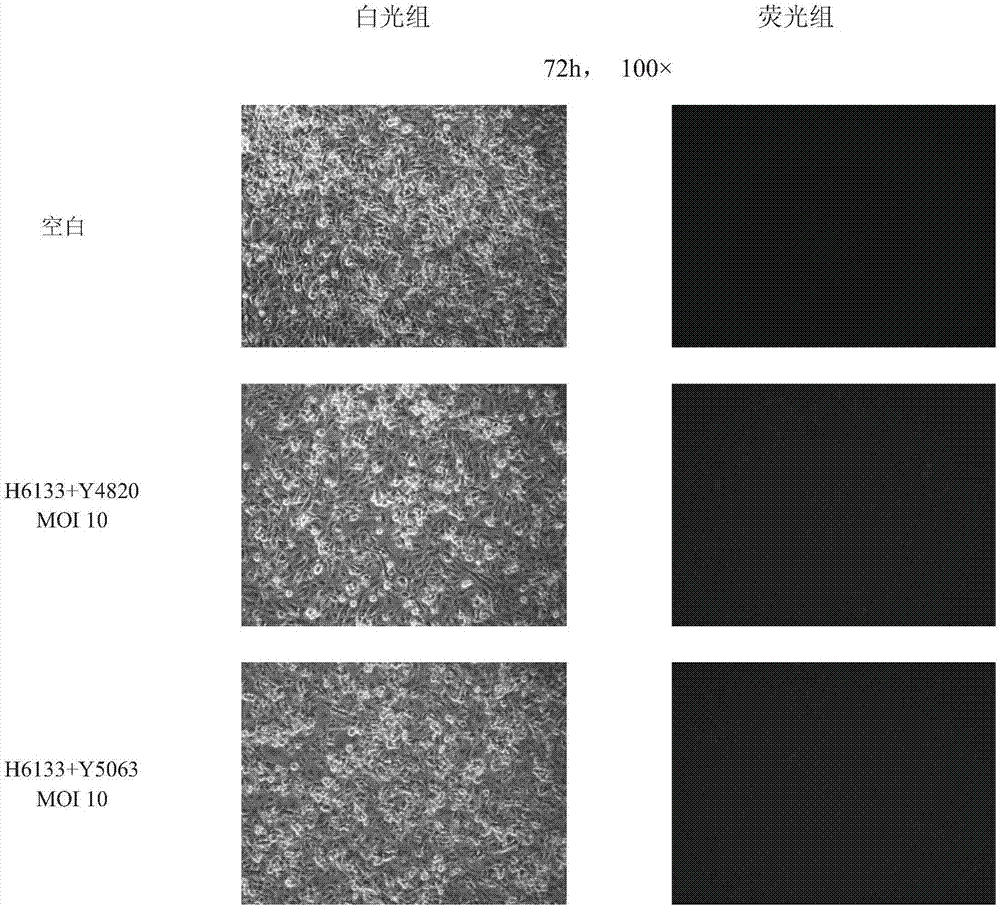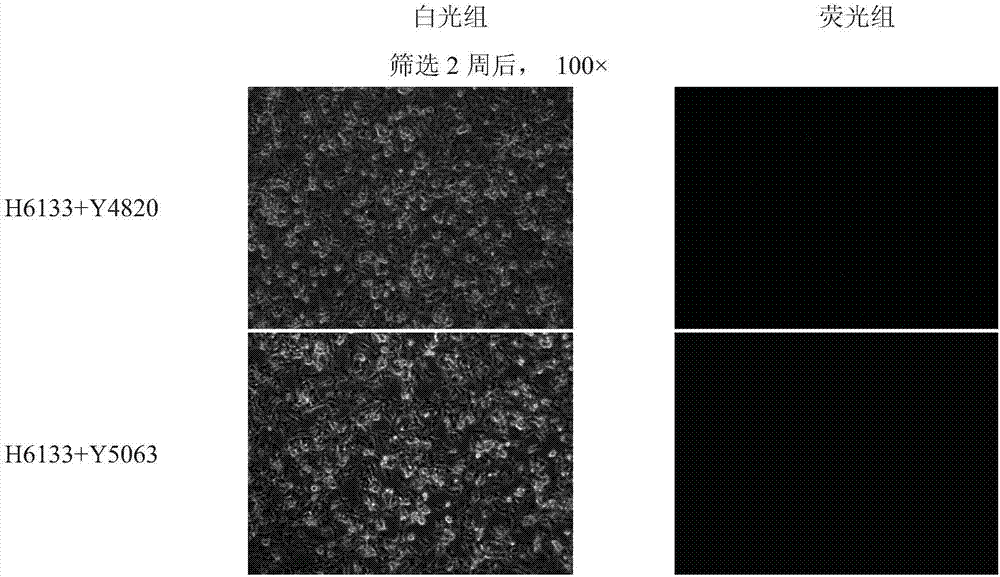gRNA target sequences for endogenous overexpression of 1ncRNA-XIST and application thereof
A target sequence and overexpression technology, applied in the field of CRISPR/dCas9 lentiviral system, can solve the problems of heavy workload, long cycle, and low positive rate
- Summary
- Abstract
- Description
- Claims
- Application Information
AI Technical Summary
Problems solved by technology
Method used
Image
Examples
Embodiment 1
[0045] Example 1 lncRNA-XIST endogenous overexpression (CRISPRa) gRNA vector construction and lentiviral packaging
[0046] 1. Design the gRNA targeting human LncRNA-XIST near the transcription initiation site, and construct three lentiviral vectors expressing the gRNA.
[0047] Target gene: XIST[Human]:NR_001564[Full:19296bp]
[0048] gRNA targets:
[0049] Numbering
gRNA target
target sequence
1
Target 1:a1
AACCAAATCACAAAGATGTCCGG
2
Target 2: a4
GGTTCAAAATTTACCCAGTAAGG
3
Target 3:a5
TGGCCTAGAAGATTGAAAGCCGG
[0050] Among them, Y5063, Y5064, and Y5065 plasmids were selected as vectors in the experimental group, and Y4820 plasmid was selected as the control vector.
[0051] The description of the Y5063-Y5065 plasmid is as follows:
[0052] Cloning serial number: Y5063, Y5064, Y5065
[0053] Gene name: XIST
[0054] GenBank ID: NR_001564 Plasmid size: 8.6kb
[0055] Species: human, upper and lower cloning res...
Embodiment 2
[0084] 1. Human trophoblast cell (HTR-8 / SVneo) culture
[0085] The culture method of human trophoblast can refer to
[0086] Graham CH, Hawley TS, Hawley RG, MacDougall JR, Kerbel RS, Khoo N, Lala PK. Establishment and characterization of first trimester human trophoblast cells with extended lifespan. Exp Cell Res 1993;206:204-211.
[0087] Complete medium: DMEM high glucose medium 90%; fetal bovine serum 10%.
[0088] Culture conditions: 37.0°C carbon dioxide (CO2), 5%
[0089] Cell Growth: Adherent Growth
[0090] Cell morphology: epithelioid; polygonal
[0091] Cell passage: 1:2-1:4 passage; 2-3 times a week
[0092] 2. MOI pre-experiment (cell infection pre-experiment)
[0093]Target cells infected with lentivirus: human trophoblast cells (HTR-8 / SVneo), and the optimal multiplicity of infection (MOI value) was determined.
[0094] 3. lncRNA-XIST CRISPRa gRNA screening target
[0095] HTR-8 / SVneo cells were co-infected with 3 target gRNA viruses, 1 control virus and...
Embodiment 3
[0099] Example 3: Screening of LncRNA-XIST endogenous overexpression stable strains and control stable strains
[0100] Co-infect HTR-8 / SVneo cells with the gRNA virus (or gRNA combination virus) with the best transcriptional activation effect and dCas9 virus H6133, and screen the stable endogenous overexpression strain of LncRNA-XIST; co-infect the gRNA control virus with dCas9 virus H6133 HTR-8 / SVneo cells, screening control stable strains.
[0101] Puro resistance screening and sfGFP fluorescent flow sorting are required.
[0102] Experimental group:
[0103] Numbering
stable strain
1
control stable strain
2
Lnc-XIST endogenous overexpression stable strain
[0104] The specific screening process is as follows: choose to use lentivirus control virus and target virus mixed with dCas9 virus to infect HTR-8 cells. 72 hours after infection of the cells (e.g. figure 1 shown), cells that were not efficiently infected were killed by adding...
PUM
 Login to View More
Login to View More Abstract
Description
Claims
Application Information
 Login to View More
Login to View More - R&D
- Intellectual Property
- Life Sciences
- Materials
- Tech Scout
- Unparalleled Data Quality
- Higher Quality Content
- 60% Fewer Hallucinations
Browse by: Latest US Patents, China's latest patents, Technical Efficacy Thesaurus, Application Domain, Technology Topic, Popular Technical Reports.
© 2025 PatSnap. All rights reserved.Legal|Privacy policy|Modern Slavery Act Transparency Statement|Sitemap|About US| Contact US: help@patsnap.com



